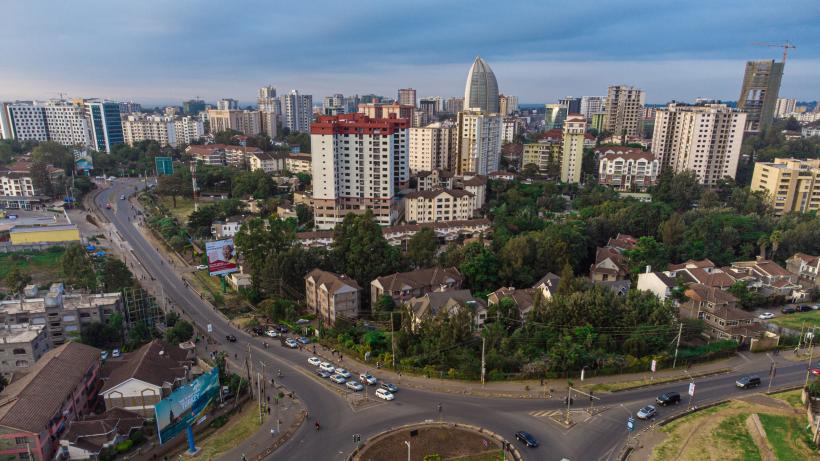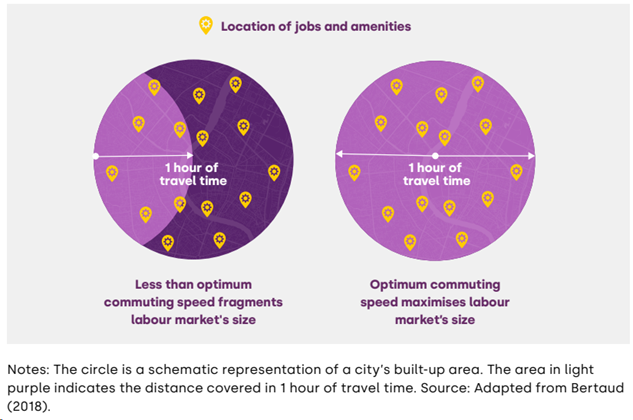
The economics of urban planning: Why land and labour markets matter
Masterplanning has resurfaced as an important planning tool in urban Africa in the last two decades. Given the rapid pace of urbanisation in lower-income countries more widely, planning ahead for the expansion of cities is crucial to ensure that residents are well-served with adequate public infrastructure and services. However, plans often do not account for the dynamics of land and labour markets, which have a fundamental impact on ever-changing urban form.
Masterplans can be powerful tools for ensuring well-managed urbanisation. When attuned to the dynamics of land and labour markers, they can facilitate improved spatial connectivity across the city, the productive clustering of firms, and affordable and liveable neighbourhoods. They have been heavily leveraged in city planning across African countries in the last 20 years.
Urban land use planning entails making important decisions on three core issues:
- The division between public and private space
- What use to assign to public space, particularly concerning public good provision, such as roads, sidewalks, and open spaces
- What regulations to impose on private space, such as zoning regulations
Despite their potential in guiding both public and private investment, masterplans often employ a rigid, top-down approach to land use, which fail to fully account for evolving realities and local enforcement capacity. Furthermore, considerations for land and labour market dynamics are often absent.
The dynamic nature of cities, particularly in lower-income countries undergoing rapid population growth and rural-to-urban migration, means that urban form is always changing and adapting to infrastructure development, citizens’ decisions, and market forces. If urban land use plans overlook these dynamics, they may lead to exclusionary urban policies that reduce welfare.
Accounting for land markets
Land markets are crucial in shaping urban form. Two key features of land – immobility and fixed supply – mean that higher demand for floor space leads to an increase in the price of land, particularly in areas which are closer to jobs and amenities. Higher prices, in turn, provide incentives for residents and developers to use land as efficiently as they can, or to build upwards, to accommodate more people and leverage the desirability of a certain location.
Households, therefore, decide where to reside based on a trade-off between rent, floor space, and location. This helps explain, for example, why beneficiaries from government programmes which provide housing units on the periphery of cities end up leaving their house in favour of smaller (often informal) places where access to jobs is easier. A study on one of the world’s biggest housing lottery programmes in Brazil found that, on average, it led to a negative effect on the probability of participants being formally employed. Importantly, effects across neighbourhoods varied substantially, with labour market access being the main determinant of better economic outcomes.
Another example of policies with unintended consequences are those aimed at containing city growth, such as through ‘greenbelts’ and other physical city boundaries. They often lead to substantial increases in land and housing prices without addressing the fundamental constraints to urban mobility. People will continue to migrate to cities in search for better employment opportunities, especially the youth, and particularly in face of climate change shocks. Ensuring that the supply of land and floor space continue to grow to keep up with demand is important for accommodating migration flows and tackling housing affordability.
Land markets can also trigger land use transformation by sending price signals when land is underused, or its use is unsuitable for its location. For example, news of a transport infrastructure investment will influence where firms and workers choose to locate. The responsiveness of land markets, and consequently land use policy, to evolving needs of the city is an important driving force of a productive reallocation of people, capital, and resources.
Accounting for labour markets
Labour markets are the backbone of cities, bringing together workers with varied, but complementary skills. The larger and more well-connected a city is, the more it can unlock economies of scale and specialisation, enhancing productivity.
Spatial connectivity allows firms and workers to find their best match and do so in less time. It can be achieved through denser cities and faster commuting times. Denser cities reduce the physical distances between people and places and have the added benefit of reducing the greenhouse gas emissions per capita. Faster commuting times maximise the number and variety of jobs that workers can access within one hour of travel time, as illustrated in Figure 1.
Figure 1: Faster commuting speeds maximise labour market size and employment opportunities

Embedding this dynamic into planning decisions is important to ensure that urban land use strategies augment, rather than fragment, labour markets. For instance, as a way to tackle congestion, pollution and other urban challenges, some planners advocate for a ‘15-minute city’. In other words, the creation of self-contained neighbourhoods, which offer all daily needs, including work, within a 15-minute walk or bike ride from home. While quick access to amenities, mixed-use development, and pedestrian and cycling-friendly infrastructure are all desirable for building liveable neighbourhoods, this strategy disregards that some businesses benefit from clustering. It is therefore unlikely that economic activity would benefit from being evenly spread-out across the city. This policy rather leads to smaller, fragmented labour markets which offer fewer opportunities for the average worker to find a satisfying job.
Embedding economics in urban land use plans
Land use policy should therefore incorporate the dynamics of land and labour markets to ensure that plans provide the responsiveness and flexibility needed to adapt to everchanging realities. A useful practice is collecting the appropriate data to monitor indicators that can provide useful triggers for action. These include information on real estate markets, such as land prices and rent for different income groups, and average commuting times and costs. Local community engagement is also important for ensuring that directives take a bottom-up, contextualised approach.
Plans need to move away from obsolete regulations and be viewed more than just statistic blueprints, but as vehicles for guiding dynamic urban development.
The 8th Urbanisation and Poverty Reduction Conference will be held on 7 and 8 March 2024.

